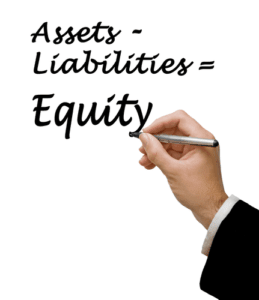
Profitability and economic sustainability are essential in veterinary practices. A thriving balance sheet keeps HVAC Bookkeeping the clinic doors open, and supplies exam rooms and labs with state-of-the-art equipment to enhance patient care. Our clients and patients rely on us to stay in business, and that requires healthy finances. The AVMA—along with many other organizations—recommends the AAHA/VMG Chart of Accounts as the standard chart of accounts for veterinary practices.

DVM MANAGEMENT &DVM PRACTICE SALES

It’s not just about finding someone who understands numbers, but someone who understands the unique financial landscape of the veterinary industry. Using the AAHA/VMG Chart of Accounts won’t automatically increase your practice’s value. But your ability to manage the practice by quickly identifying variances and drill into the numbers will make controlling your profitability easier. Using the AAHA/VMG Chart of Accounts leads to significant time and cost savings. Practices can allocate resources to other critical areas, such as patient care and growth initiatives. Running veterinary accounting a veterinary practice is similar in many ways to running any other business.

Accounting Software and Tools
- Knowing your current market valuation can provide insight into determining your go-to-market plans.
- It is easy (and highly recommended!) to keep the books on an accrual method for managerial accounting and have your tax accountant convert to cash method at year end for tax preparation.
- These enterprises require meticulous bookkeeping to track expenses, revenues, and inventory, ensuring profitability and regulatory compliance.
- This chart, designed with vets in mind, classifies revenue, expenses, and balance sheet accounts specifically for veterinary practices.
- Staff must understand how to categorize transactions accurately to best perform their duties in the practice.
- With fluctuating service demands, practices had to adjust financial records more frequently to maintain accuracy and compliance.
Make sure the organization you are joining has a track record of providing resources and assistance for your clinic, so client and patient care can remain your team’s top priority. I am a seasoned commercial and corporate finance professional with over 30 years of experience. As part of the VERTESS team, I provide clients with valuation, financial analysis, and consulting support.
Tax Planning Strategies
The AAHA/VMG Chart of Accounts is more than just a basic utility to track bills and payments. It lets you better organize your finances and collect data you need to strengthen your operation. It’s free for all veterinary practices, and you can begin implementing it in your hospital today. It’s pretty easy to spot buyers who are authentic, trustworthy, and have your best interests at heart. Blue River PetCare dedicates a lot of time to getting to know the owners on the front end of the sale process to make sure we understand the key ingredients to the practice’s success. This collaborative process ensures a smooth transition and lays the foundation for a successful partnership.
Understanding financial goals intimately and navigating the complex, unique aspects of veterinary accounting are necessary. Accounts Receivable (AR) is a critical element of financial management within veterinary practices. It represents the balance of money due to a clinic for services that have been performed but not yet paid for by clients. Efficient handling of AR is vital for maintaining a healthy cash flow, essential for the day-to-day operations of a veterinary clinic. Veterinary practices require meticulous financial tracking to maintain profitability and ensure smooth practice management. Bookkeeping in veterinary medicine involves recording and managing various transactions, ranging from client deposits to advance payments for scheduled treatments.
How it Differs from Traditional Bookkeeping Methods
The CPAs and accountants at Brown Welch Mehta CPAs provide veterinary accounting, tax reduction planning, and consulting to practices. What sets us apart from other CPAs is our extensive experience working in this particular segment of the healthcare industry. We stay on top of industry trends and issues so we know exactly how to manage tax obligations and conquer financial challenges for veterinarians. Practices must stay updated on tax laws relevant to the veterinary industry. Once you have a clean, organized chart of accounts, the next step is understanding the two different processes and methods for entering revenue and expenses. It records income when client payments are received and expenses when vendor bills are paid.

It applies best-practice accounting standards for classifying revenue, expense, and balance sheet accounts in practice. Successful management of your practice starts with your accounting software. Whether you are a new or seasoned practice owner or manager, having an accounting system you can unearned revenue trust is a must. In conclusion, veterinary practices rely on systematic bookkeeping and proactive management of Accounts Receivable to ensure financial health and the provision of uninterrupted, quality veterinary services.

If you’re an owner of a veterinary practice, you can receive a market valuation from VERTESS regardless of whether you’re considering selling your business. Knowing your current market valuation can provide insight into determining your go-to-market plans. A market valuation of your veterinary practice is a great start to planning for your future. To better understand the current value of veterinary practices, let’s begin with discussing some of the key performance indicators that buyers are looking for when evaluating potential practice acquisitions.